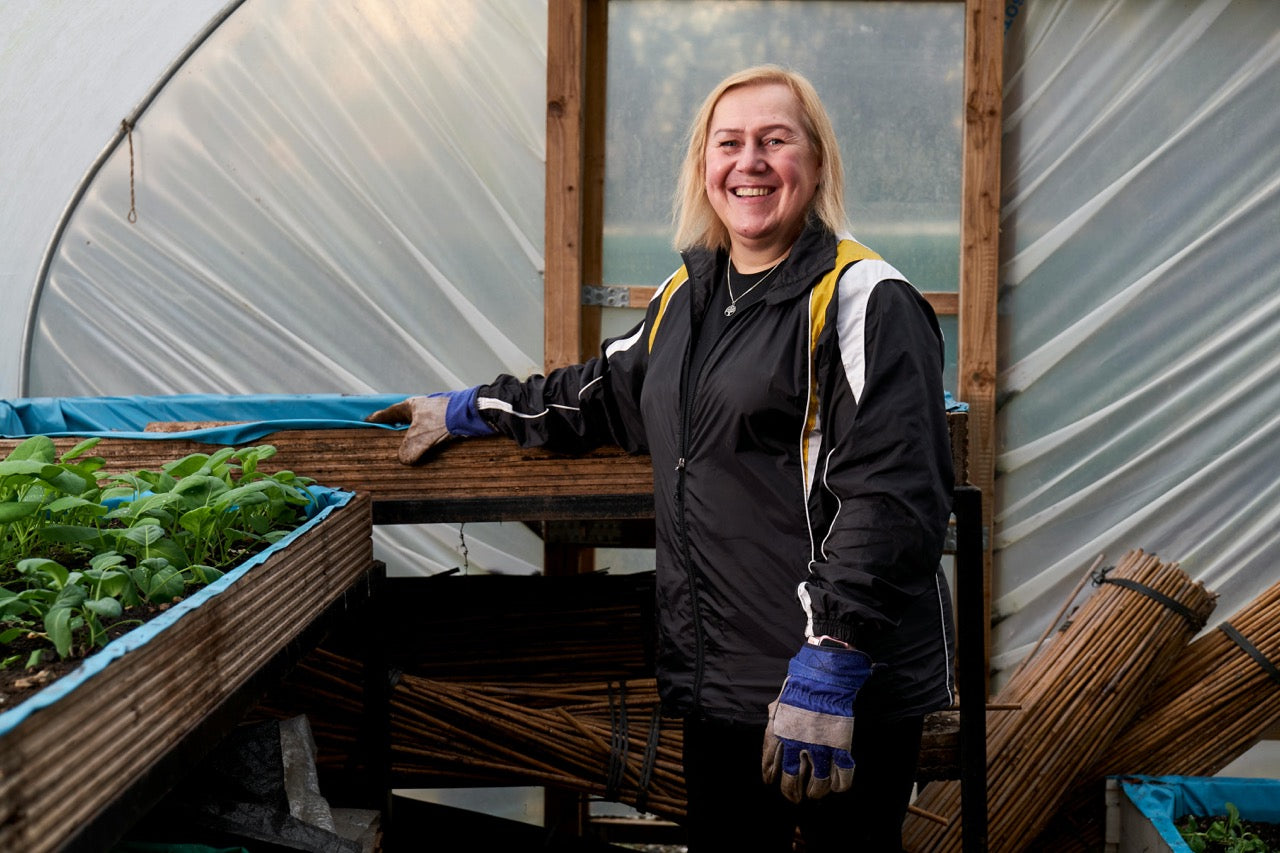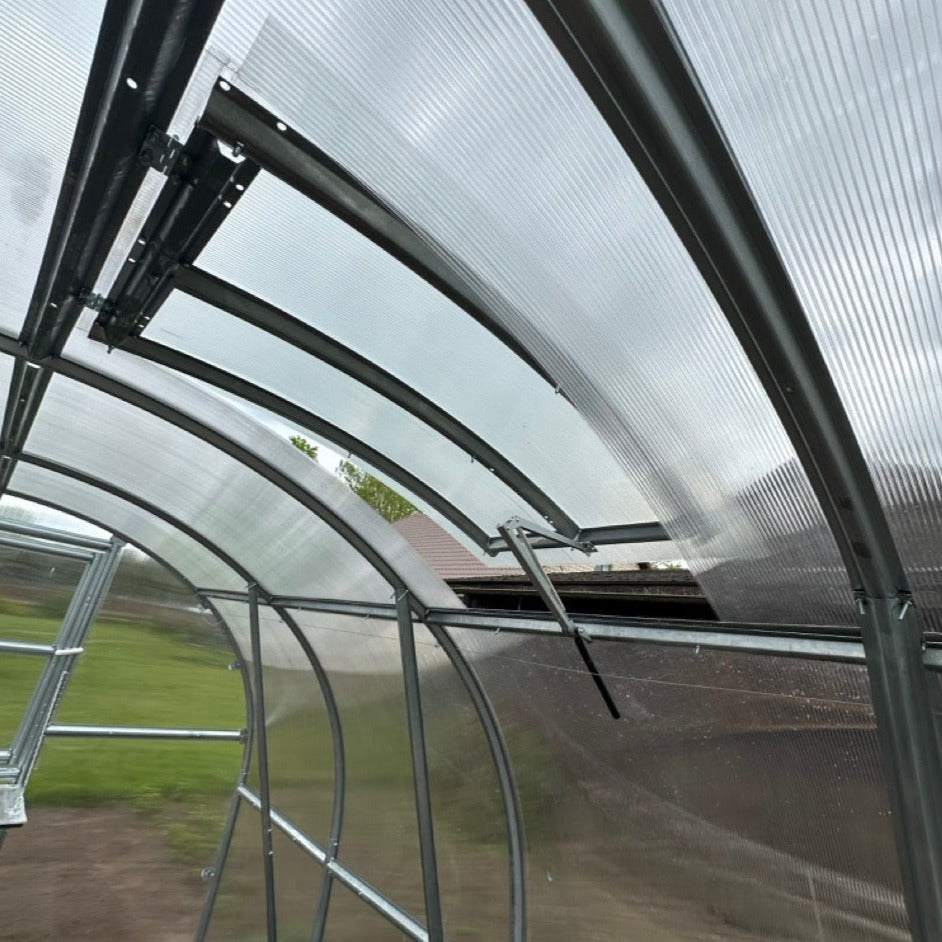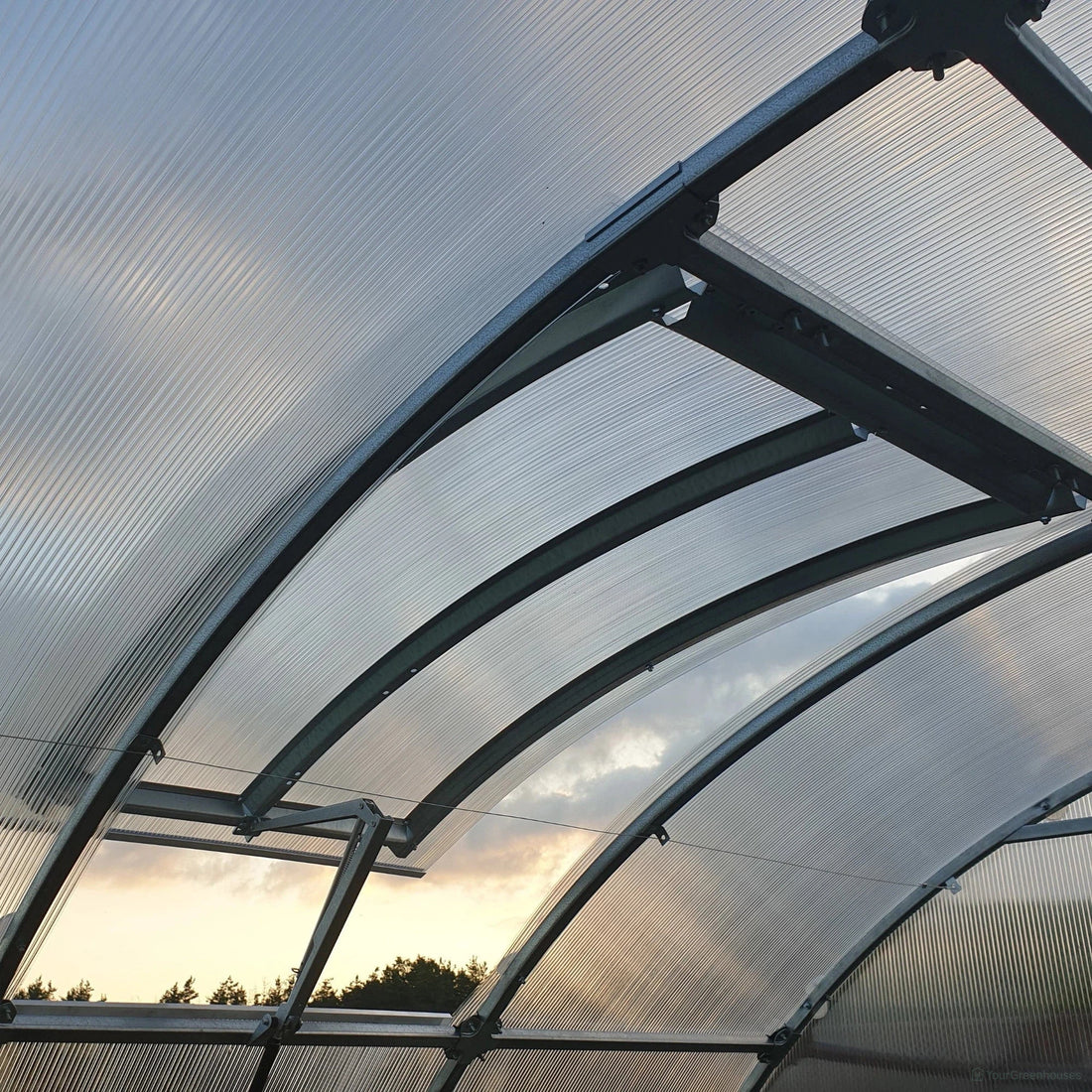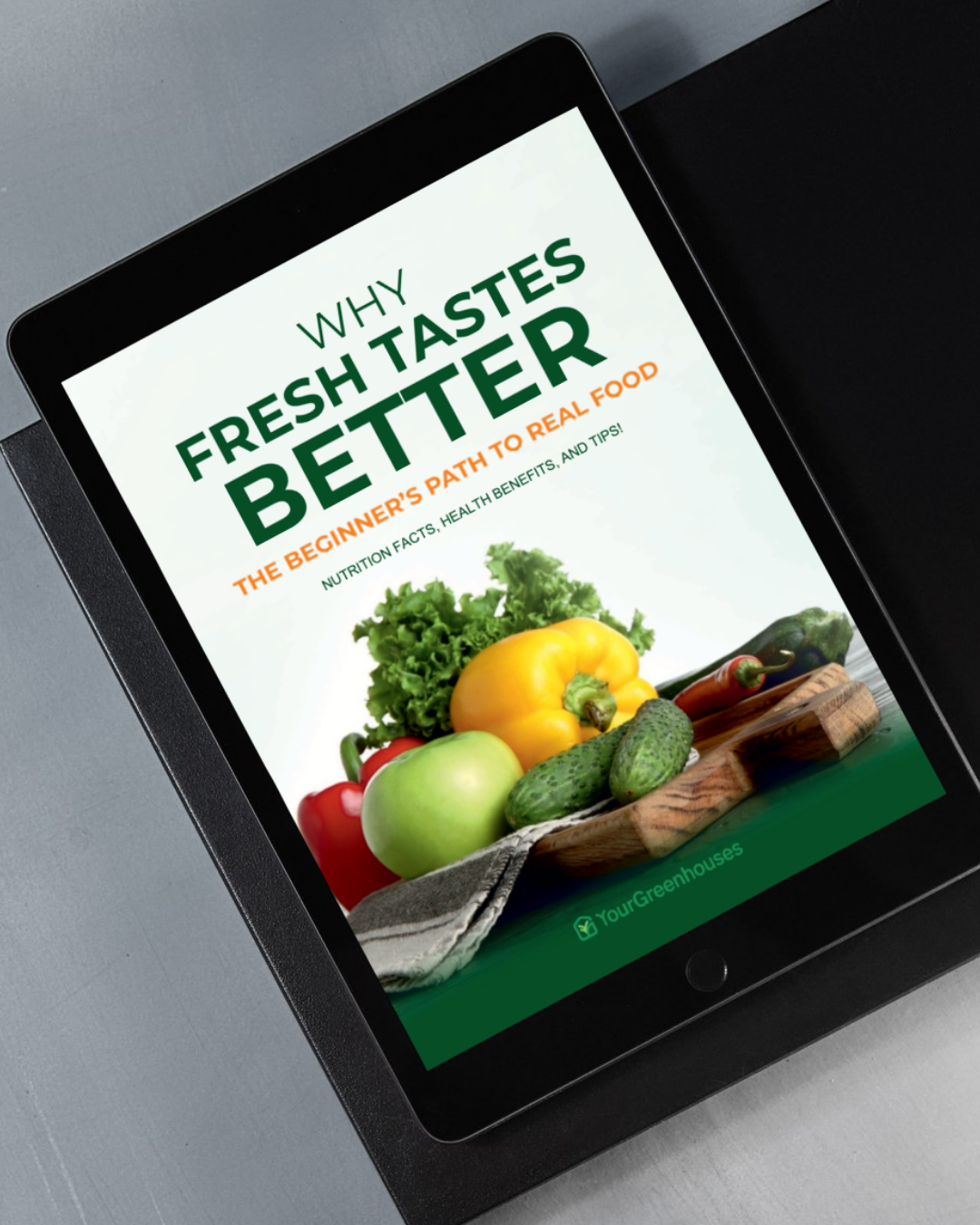Polycarbonate vs Glass Greenhouse: Which is Better?
When choosing a greenhouse, one of the considerations to make is the choice of material. You see, greenhouses come in different forms of materials, and the ideal choice of greenhouse material depends on your plant-growing needs.
Two of the most common types of greenhouse materials are polycarbonate and glass. Both materials have their pros and cons, and the decision ultimately comes down to your specific needs and preferences.
In this comprehensive comparison guide, we will delve into the characteristics of polycarbonate and glass greenhouses to help growers make informed decisions based on their specific needs.
Differences between Polycarbonate and Glass Greenhouse
Generally, the main difference between polycarbonate and glass greenhouses falls under the category of intended use.
From a distance, you could say both materials have a similar function; provide a transparent shield/cover to protect your greenhouse plants from the elements. But this is where the similarities end.
Now, before we dive deeper into the differences, let’s first start by having an individual breakdown of each greenhouse material.
Polycarbonate for Greenhouse
Polycarbonate is a thermoplastic polymer that is lightweight, durable, and resistant to impact. It is often used for greenhouses because it is less expensive than glass and can be easily molded into different shapes.
Additionally, polycarbonate is a good insulator, which means it can help regulate the temperature inside your greenhouse. Polycarbonate panels are available in single, double, or multi-wall configurations, each offering different levels of insulation.
Glass for Greenhouse
Glass is a traditional and among the oldest forms of greenhouse materials. It is known for its clarity and ability to let in plenty of natural light.
Glass is also easy to clean and is not prone to discoloration over time. However, glass is more fragile than polycarbonate and can break easily, especially in areas with extreme weather conditions.
Comparing Polycarbonate and Glass Materials for your Greenhouse
Now that we have a rudimentary understanding of what each material is, let's discuss the major distinction between both materials.
We shall compare these materials based on four main categories, namely:
- Material property
- Environmental impact
- Cost considerations
- Application suitability
Material Properties
Durability

Polycarbonate and glass win in the durability department. However, polycarbonate has better impact resistance. It is virtually unbreakable and can withstand strong winds, hail, and even baseballs.
On the other hand, glass is more prone to breaking and can be dangerous if it shatters. However, tempered glass is available which is stronger than regular glass and can withstand some impacts.
Insulation Quality
As we mentioned earlier, polycarbonate material is available in multi-wall configurations, which create air pockets, responsible for regulating temperatures inside a greenhouse.
In addition, polycarbonate has a generally higher R-value, and this is particularly beneficial in colder climates as it reduces the need for extra heating.
Meanwhile, glass has better heat conductivity and lesser insulation properties. The higher thermal properties make it challenging to maintain consistent temperatures in a greenhouse.
On the upside, the thermal mass of glass helps to store heat during the day, and release it at night, thus contributing to a more stable environment.
Light Transmission
Polycarbonate is equally as transparent as glass, and will generally allow light to pass through. The greatest distinction regarding light transmission is polycarbonate offers excellent light diffusion, therefore reducing the risk of shadowing and promoting even plant growth.
The material's innate ability to diffuse light effectively reduces shadows and provides uniform light distribution to plants, promoting better photosynthesis.
However, the degree of light transmission can vary based on the thickness and type of polycarbonate used. Some panels may be treated to block or filter specific wavelengths of light, catering to the specific needs of different crops.
On the other hand, glass offers unmatched clarity, while allowing maximum light penetration. The light transmission through glass is usually unaltered and allows for a clearer and more natural view of the outside world.
The unaltered light transmission makes the glass greenhouse suitable for crops requiring specific light conditions. However, this can lead to uneven light distribution, leading to shadowing in certain areas of the greenhouse.
Environmental Impact
Recyclability
While both materials are recyclable, glass is easier to recycle indefinitely without losing its quality.
Polycarbonate, on the other hand, is also recyclable but requires a more complex process. Remember polycarbonate is a thermoplastic material, and while this means it's more flexible, recycling it is more tedious.
The process involves separating it from other plastics and removing any coatings or additives. This process can be more challenging than recycling glass, and it may not always be economically feasible.
Lifecycle Emissions
The lifecycle emissions of a greenhouse refer to the total amount of greenhouses emitted during production, use, and disposal. Polycarbonate and glass greenhouse have different lifecycle emissions.
For example, glass has a higher carbon footprint during its production due to the energy-intensive process of melting and shaping it. On the upside, it has a longer lifespan than polycarbonate, so it requires infrequent replacements and disposal.
Polycarbonate, on the other hand, has a lower carbon footprint during its production due to its lightweight and less energy-intensive manufacturing process. However, its shorter lifespan means that it needs to be replaced more frequently, which can result in more emissions over time.
Cost Considerations
Initial Investment
Regarding the initial costs, polycarbonate greenhouses are generally cheaper than glass greenhouses. Mainly, this is because of the cheaper costs of polycarbonate panels.
Cost aside, polycarbonate greenhouses are generally easier to assemble than glass greenhouses, which can help to reduce the cost.
Maintenance Expenses

Glass is more maintenance-intensive than polycarbonate, and the reason is glass is more fragile and likelier to break, crack, or shatter under intense weather conditions than polycarbonate.
Glass is also heavier than polycarbonate, meaning it exerts more pressure on the greenhouse frame.
One upside of glass is that unlike polycarbonate, it doesn’t degrade or discolor over time, and if properly maintained, it can last for years. Polycarbonate panels, on the other hand, may show signs of yellowing and wear due to UV exposure, necessitating periodic replacement or treatment with UV inhibitors.
Application Suitability
Geographic Location
When choosing between polycarbonate and glass material for your greenhouse, you need to consider your geographic region, more so your local climate.
For example, we know that polycarbonate is sturdier and can withstand inclement weather such as hail, snow, and wind. It also has excellent insulation which regulates the inside greenhouse temperatures.
Therefore, a polycarbonate greenhouse will work best in regions with extreme temperature fluctuations and unpredictable weather conditions.
On the other hand, glass greenhouses excel in regions with milder climates as they offer better light transmission and insulation.
Crop Types
Your choice of crops also determines the types of material to get. For example, if you're growing full-sun delicate plants that require plenty of direct sunlight, a glass greenhouse could be a much better option as it offers better light transmission.
However, if you grow plants that require diffused light, polycarbonate greenhouses are the way to go as they offer better light diffusion.
Structural Design
The structural design of your greenhouse also determines which material is more suitable. If you are looking for a lightweight and easy-to-install greenhouse, polycarbonate is a better option as it is lighter than glass.
However, if you are looking for a more permanent structure that can withstand extreme weather conditions, glass is a better choice as it is more durable and long-lasting.
Polycarbonate or Glass for Greenhouse: Which is better?
The choice between a glass and polycarbonate greenhouse is more than what meets the eye. It depends on various factors, and each material has its advantages and disadvantages.
Ideally, however, the choice between polycarbonate and glass depends on your specific greenhouse growing needs, budget, climate, and personal preferences.
Polycarbonate is often preferred for its insulation, durability, and affordability, while glass is chosen for its high-light transmission and timeless appearance.
Consider the factors that are most important to you and your growing environment when making your decision.
Frequently Asked Questions
What Are the Pros and Cons of Polycarbonate Compared to Glass in Greenhouse Construction?
Polycarbonate is a lightweight and shatter-resistant material that provides excellent insulation and UV protection. It is also more affordable than glass, making it an attractive option for budget-conscious gardeners. However, polycarbonate can scratch easily and may yellow over time, reducing its transparency.
Glass, on the other hand, is more durable and scratch-resistant, but it is also heavier and more expensive than polycarbonate.
How Does the Cost of a Polycarbonate Greenhouse Compare to a Glass Greenhouse?
Polycarbonate greenhouses are generally less expensive than glass greenhouses. The cost of a polycarbonate greenhouse varies depending on the size, quality, and features, but it is usually more affordable than a glass greenhouse of the same size and quality.
How Does Polycarbonate and Glass Greenhouse Insulation Compare?
Polycarbonate is a better insulator than glass, providing better heat retention and energy efficiency. It also provides better UV protection, which can help prevent sun damage to plants.
Glass, on the other hand, is a poor insulator and can lead to heat loss, making it less energy-efficient than polycarbonate.
Conclusion: Are Polycarbonate Greenhouses Better Than Glass Ones?
In summary, polycarbonate and glass have their advantages and disadvantages when used as a greenhouse material.
The trick to choosing the right material is considering your greenhouse growing needs initial investment, maintenance expenses, and longevity.
At Your Greenhouses, we have a variety of polycarbonate greenhouses, which are great options if you need something more durable, better insulator, and budget-friendlier than glass greenhouses.












